Twenty+ Surprising Chinese Language Facts
Here are over twenty interesting facts about the Chinese language — all kinds of things you either need to know if learning Chinese, even if you didn’t realise it.
I see a lot of misinformation about the Chinese language out there, occasional odd political correctness, and just confusion. I like to help out and explain a little of the mystery behind the Middle Kingdom.
It’s why I wrote a long post about what it means to “be” or to “speak” Chinese.
But that was a long post, and sometimes what people just want are fast, fun, Chinese language facts. So here they are! This is a list of Chinese language facts that any Chinese language learner or even just language enthusiast should know.
Quick note — consider the below from the perspective of a fellow Chinese learner sharing what he has learned. I’m good at Chinese — fluent conversationally — but I am not native. I learned a LOT of Chinese while living in Greater China for years, and want to share those hard-won lessons.
Want to learn to speak, read, and write Chinese? These are the resources I’d use today to learn Chinese (Mandarin) from scratch if I were starting again.

Contents
Chinese speakers have (at least) FOUR main names for “Mandarin”
These are the following:
- 国语 (guóyǔ), which means “national language”. This is often heard in Hong Kong, particularly in Cantonese
- 中文 (zhōngwén), meaning “Chinese”. People say this often, but when speaking Cantonese it refers to Cantonese.
- 汉语 (hànyǔ), the “Han people’s language”, and
- 普通话 (pǔtōnghuà), “standard language”. This is the universal technical term, most commonly heard in Mainland China.
So if you ask “Do you speak Chinese” in Chinese, you have to be more precise.
You might hear other terms in other parts of Southeast Asia, too. For example in Singapore, some people may say 华语 (huáyǔ) or 华文 (huáwén).
The word “Mandarin” doesn’t actually exist in Chinese
Chinese speakers use the word in English but are just as likely to just say “Chinese”.
The English word “Mandarin” comes from Sanskrit (मन्त्रिन्, mantrin, “minister”), and originally meant an official of the Ming and Qing empires — and their language.
Chinese speakers mean different things by “I speak Chinese”.
When speaking English, “I speak Chinese” can mean different things. It depends on where the speaker is from. People from Mainland China will mean Mandarin. People from Taiwan probably mean Mandarin.
People from Hong Kong, Singapore, or Malaysia, may mean Mandarin, Cantonese, or another dialect like Hakka or Hokkien or something else. You should clarify!
Check out our article on what it means to speak or be Chinese.
Over 1.3 billion speak Chinese (Mandarin)
This makes Chinese the most spoken language in the world both as a mother tongue, and combined native+fluent speakers.
Most Mandarin speakers live in Mainland China (the People’s Republic of China), but they also live in Taiwan (the Republic of China), Hong Kong (where it’s mostly spoken as a second language), and Macau — as well as in the Chinese diaspora.
The Chinese populations of Malaysia and Singapore also often speak Mandarin, usually having learned it at school (unless they’re migrants).

Formal written Mandarin and Cantonese (like in the news) is almost identical.
The same words and structure are used.
Sometimes a Mandarin speaker can make out formal news Cantonese, with experience, and if you squint your ears…
Colloquial Cantonese, Mandarin, Shanghainese and other dialects are not mutually intelligible at all.
In other words, an only-Mandarin speaker at a party where people are bantering and joking in Shanghainese won’t understand a thing (without guessing and developing an ear for it, anyway).
To know Chinese, you have to know over 2,500 characters.
This is one of the most contentious Chinese language facts! There’s no “official” answer, but the below is a consensus.
To get by in Chinese you need to recognise around 2,500 characters, which is what you learn in the highest level of the HSK, the standard Chinese proficiency test. For a professional vocabulary, add about 1,000 more, depending on your profession.
Most Chinese people don’t know this now. Nor do they know how many characters they know. It’s like asking you “How many words do you know in your language?”
Remember — we don’t learn characters in isolation, as most words are made of two characters.
Mainland China has a literacy rate of over 95%.
This is impressive, considering it’s a developing economy and how hard Chinese is! Literacy in major cities is over 99%, like developed countries in Europe and North America.
Chinese characters are made up of ~250 “radicals”.
These are like building blocks for characters, like a 前 with a 火 under it (and squashed) is a 煎. Radicals sometimes carry hints of meaning and pronunciation that help you remember which character is which — but they don’t have to!
It takes most people one-two years of full-time study to learn Chinese properly.
This is how long it takes to be able to confidently say they can speak Chinese in a variety of work and professional situations, according to a few sources.
Chinese characters mostly overlap with Japanese Kanji.
Hanzi and Kanji have the same roots. These days, they overlap in meaning, though pronunciation varies a lot (particularly in Japanese).
The overlap is especially obvious in simple characters. For example, the name of Tokyo in Japanese Kanji is 东京, which means “Eastern Capital”. The name of Beijing in Chinese is 北京, which is “Northern Capital”.
However, Japanese underwent a separate simplification process to the Chinese one, which means many common characters look similar, but different.
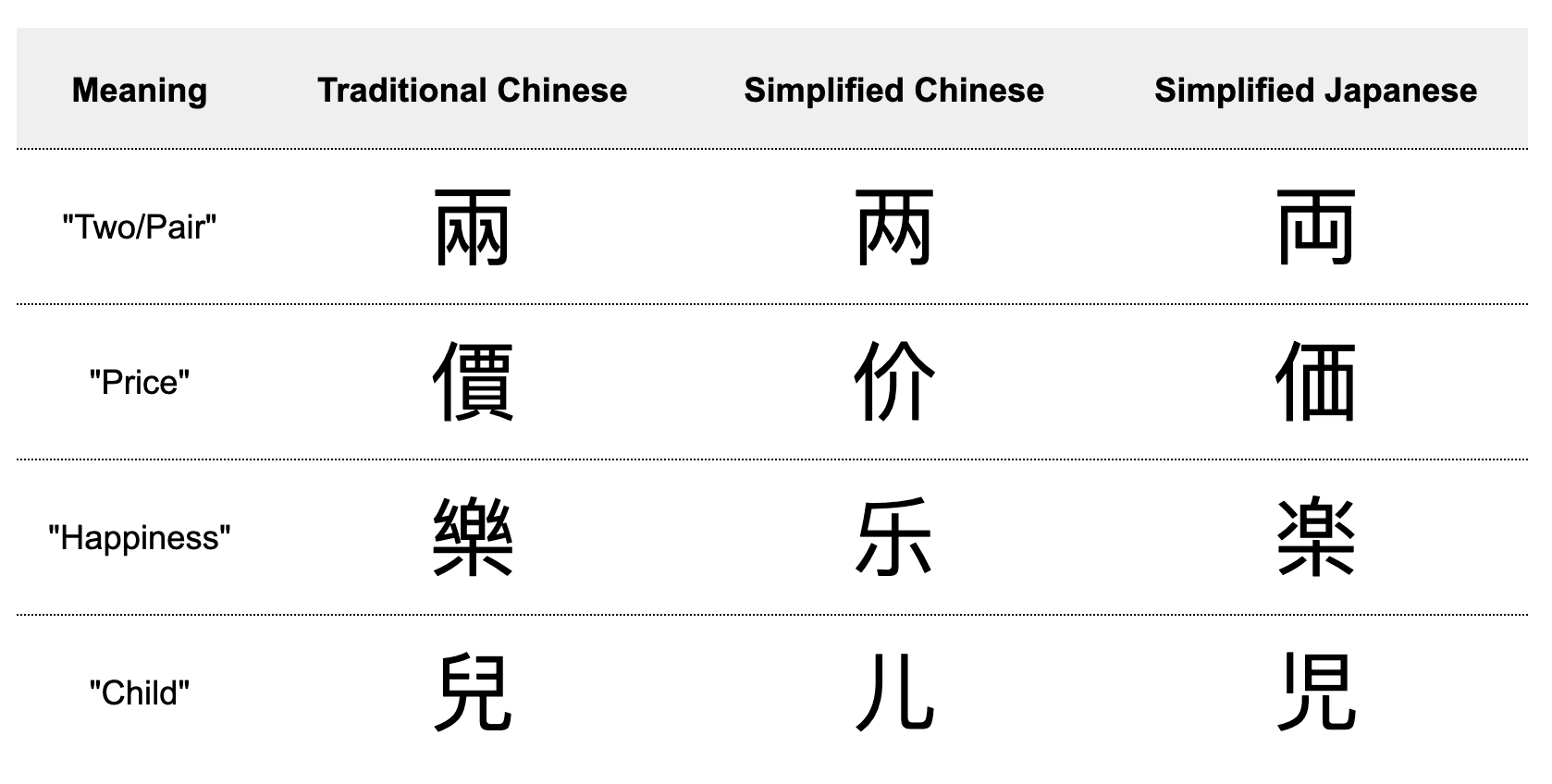
Chinese characters also overlap in meaning with Korean Hanja (which are used much less and only in slightly formal/official situations).
With both Japanese and Korean, the correspondence with Chinese characters is not 100% 1:1, but you’d get a massive head-start, and closing the gap would be easy.
There’s a romanisation system called “Pinyin”, but it won’t replace characters.
Pinin is used to teach pronunciation to kids and learners by writing them out in roman lettering. For example “nihao” is written “nǐhǎo”, indicating both syllables have a falling-rising tone.
But Pinyin will never replace characters. The main reason for this is that characters contain so much more information. You’d lose it all if we went to Pinyin!
For example, here are all the characters that I learned in a year of study that are pronounced shì, along with examples of words the characters are used in:
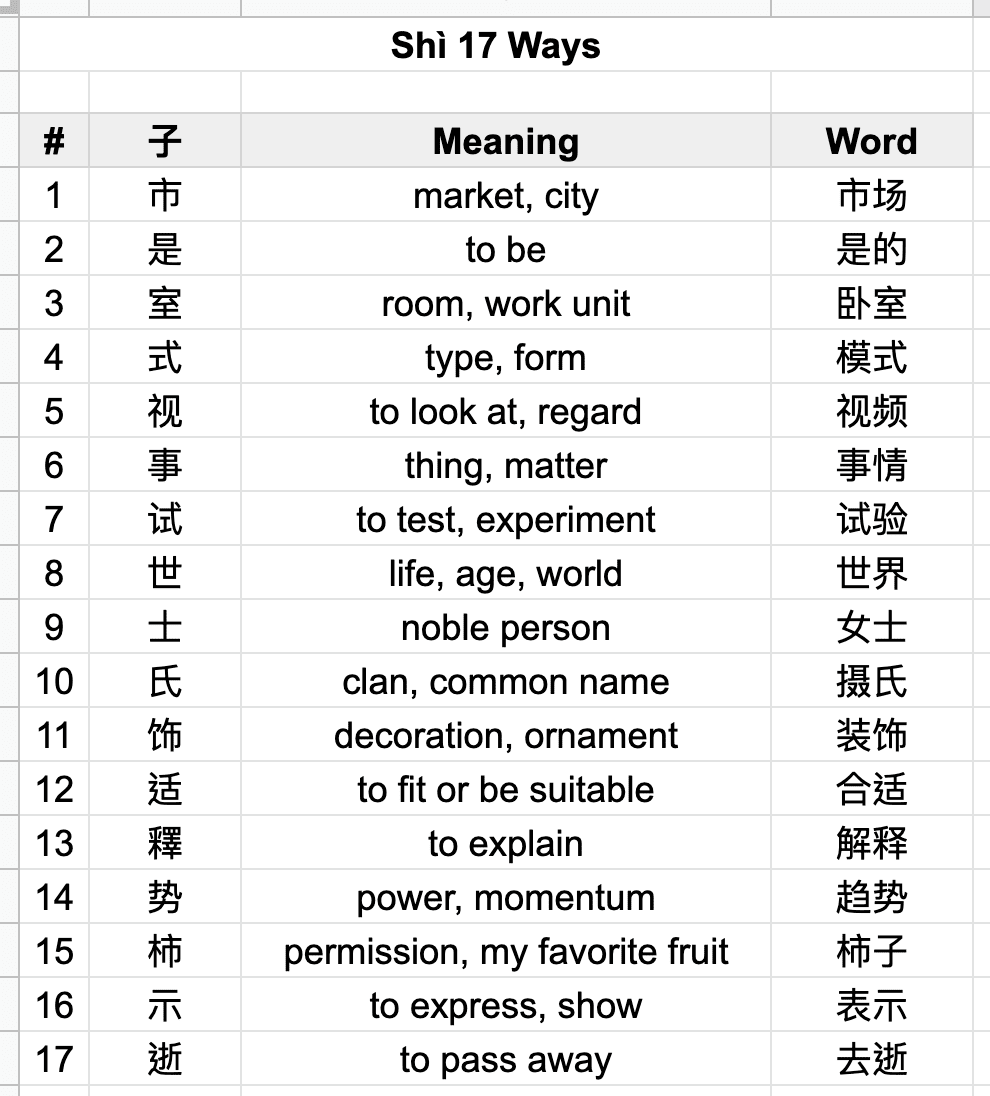
This isn’t just a laundry list — there are actually more in the dictionary (go to MDBG and search for “shi4”). These are all characters in common use.
Could you imagine ditching the characters and writing shì to express all that variation in meaning?
The main accents of Chinese are Northern, Southern, and Taiwanese.
Northern Chinese can be a bit gruff and abbreviated, and has an r sound that’s like a pirate saying “Arrr!”.
The Beijing accent is a clear subset of the Northern accent and is what people think of as “standard” Mandarin. If you learn Chinese with a Beijing accent and speak to people in Shanghai or Taipei, people will tell you that you speak so “standard”!
The southern Chinese accent lacks the r and is more clear. The Taiwanese Chinese accent is like Southern, but more sing-song.
No matter which Chinese accent you learn, you’ll learn to understand all three.
Chinese has five tones (well, four plus one).
One of the most famous Chinese language facts is that it’s a tonal language. But people don’t know how many tones there are.
The main tones are rising, flat, falling, falling-rising, and a mysterious neutral tone (sometimes not counted, which is why you may know it as four times).
Every character has a tone but very few characters have more than one acceptable tones. This is similar to in English how one word might have multiple pronunciations, like in the sentence “I feel content about this web content”.
Tones change a Chinese word’s meaning… but it doesn’t make a word hard to understand.
Teachers love to show the classic example of four words with different meanings depending on tone:
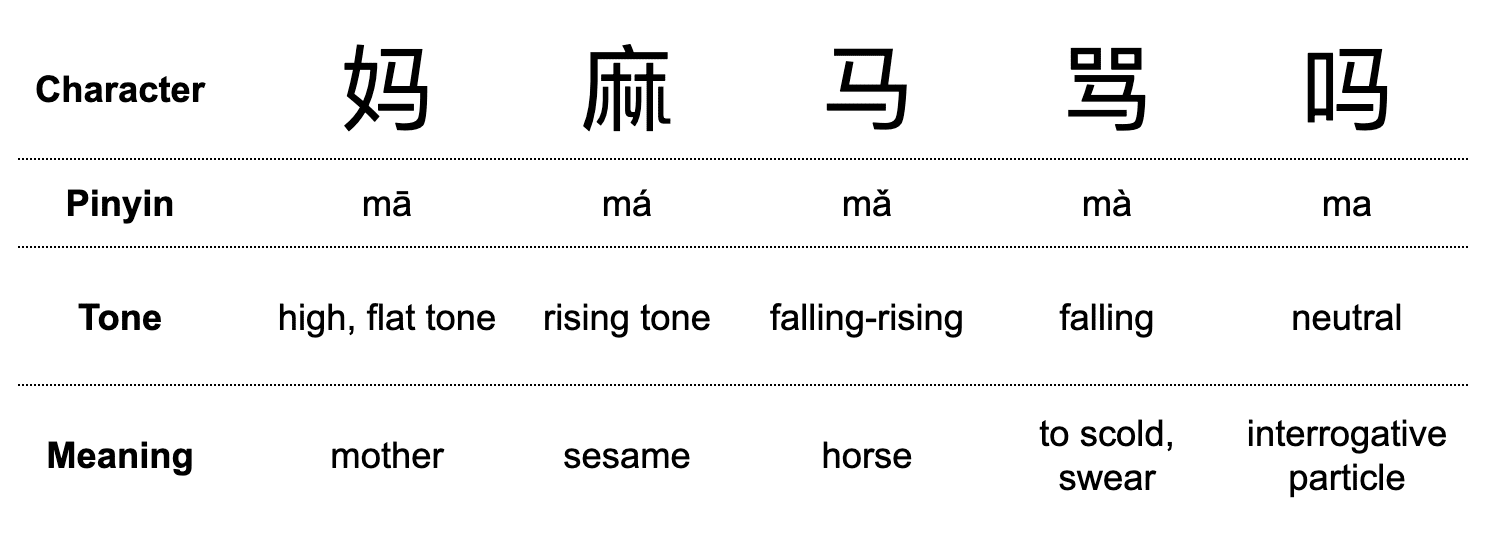
But the reality is that people hear words in a whole sentence and kind of blur tones together. In everyday life, people don’t speak like newscasters. So even a person who never learned tones can be understood.
People don’t think in tones — but they know them when asked.
Just as you wouldn’t say “hey WOULD you LIIIIIKE a hamBURger” in random pitches, and just as an Irish person has a different tone to an American, sentences have natural tone flow, and that’s what makes spoken Chinese sound natural or not.
You can get tones wrong and people will get you unless they want an excuse to not talk to you.
Still, people know tones in Mandarin, because they learned them in school.
In Cantonese, people rarely learn tones formally, so they might not know them as well! They’ll just know you sound wrong…
The main greeting you really need is “ni hao” (你好).
Chinese doesn’t have a complex system of greetings, no “how are you”, let alone a “how’s it going” or the complex to-and-fro seen in other languages.
Advanced speakers still just say “ni hao”, then proceed into conversation like “how was your weekend?” and so on.
We have a whole article on saying good morning in Chinese and good evening in Chinese. Ni hao still wins!
Chinese has grammar but it’s easier.
People sometimes claim Chinese has “no” grammar. But of course it does — there’s usually a right and wrong way of saying things.
Chinese grammar lacks many features that make other languages hard. For example, in Chinese:
- You don’t conjugate verbs (yo quiero, tu quieres), much less use a subjunctive
- You change verb tense using a marker, and it’s very simple
- There’s no grammatical gender (la table, le frigo)
- There are no cases (ein Apfel, einen Apfel etc.)
- Numbers are logical, with numbers like “91” being “nine-ten-one”, c.f. French’s “four-twenty-eleven”
- There are no plurals (especially not Arabic’s funky plurals like طفل and أطفال), and
- There’s no agglutination i.e. building huge words (again like in German).
Wow, you’d almost think Chinese were easy (it’s not).
Chinese words are mostly two-character compounds.
Yes, every character has meaning.
But relatively few words are just one character and relatively few are more than two (other than professional terms).
Words relate to each other by sharing characters. You can chain them together in a drinking game.
For example, looking around my living room for inspiration, I see a television. Television is 电视. Then 视频 is “video”, 频道 is “frequency”, 道路 is “road”, 路由器 is “router”, and so on.
Simplified Chinese isn’t much simpler.
Mainland China uses “Simplified Chinese”, whereas Hong Kong and Taiwan use “Traditional” Chinese”.
Relatively few characters are significantly simplified, like 為 to 为. Many are only vaguely simplified, like 紅 to 红.
For example:
- 小雞為什麼要過馬路?因為它要到馬路對面去 (Traditional)
- 小鸡为什么要过马路?因为它要到马路对面去 (Simplified)
Spot the differences if you want. Come on guys, finish the job!
If you want to learn both traditional and simplified — learn traditional first.
This is because simplified characters have “less information”. For example, the character for noodles, 麵, contains the simplified character 面 inside it.
It’s like abbreviating in English — if you hear someone say “what’s on the telly”, you might guess they mean “television”.
But if I ask you if you want a bowl of “crankenheisenricekracht” you’d be hard-pressed to know I mean “rice”.
Colloquial Cantonese has some special characters of its own.
Even though there’s only one “standard” written Chinese, colloquial Cantonese and Mandarin are different. These Cantonese-only characters aren’t used in Mandarin or are hardly used and almost obsolete.
For example, two common Cantonese-only characters re 係, hai, “to be” (hardly used in Mandarin), and 冇, mau, “to not have” (not in Mandarin at all).
You already know one Chinese proverb.
Chinese is rich in proverbs. People use many in daily conversation. So much that you already know one: “Long time no see”, a literal translation of 好久不见 (hao jiu bu jian).
If you want to learn some more… here are more Chinese proverbs!

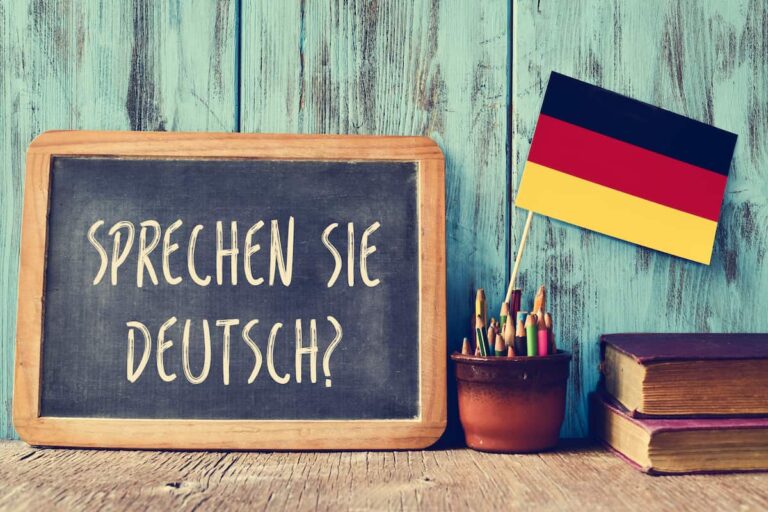




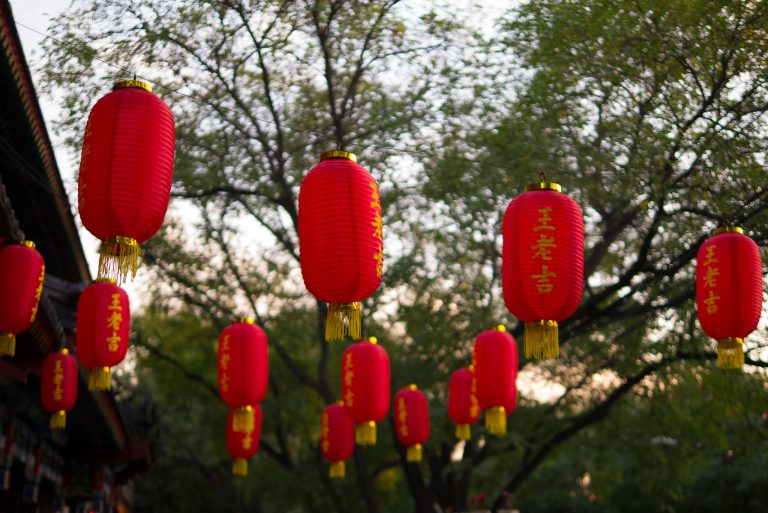
This was great! Makes me feel even better and more excited about continuing the hard, but rewarding, trek through Chinese.
It’s the best. Would love to hear how you’re progressing if you want to drop us a line privately.